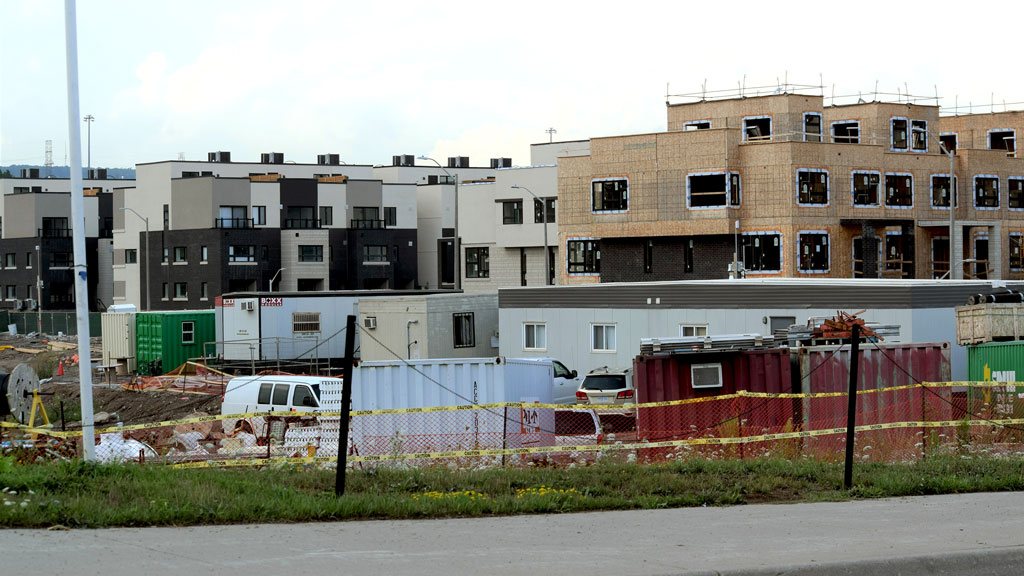BMO’s recently published Blue Book predicts that the ICI construction sector will have mixed fortunes going forward nationally, with strength foreseen in tech, manufacturing, warehousing and public infrastructure sector builds.
The predictions are set against a relatively positive overall economic backdrop, with the bank’s economists and business consultants forecasting that next year Canada’s economy could recover all of the losses it will suffer this year.
Meanwhile, the residential construction sector should remain solid in the next 18 months, with housing starts expected to rebound from 195,000 in 2020 to 215,000 units in 2021 — more even than in 2019.
The Blue Book is produced by the BMO Economics and BMO Business Banking divisions and its predictions are based on the views of BMO’s economists combined with input from local businesspeople.
Its forecast of a six per cent drop in GDP this year nationally and a matching six per cent hike next year is rosier than those of the federal government and the Bank of Canada.
The Liberals’ July fiscal snapshot anticipated a 6.8 per cent drop in GDP this year and a 5.5 per cent rebound year, while the Bank of Canada’s July Monetary Policy Report predicted a 7.8 per cent contraction in GDP this year and a moderate 5.1 per cent recovery in 2021.
“We have a tendency to be less pessimistic than others,” said Doug Porter, BMO Financial Group chief economist.
“There are still many questions as to what extent we can completely reopen next year but I would say, up to this point, the economy has been following a less negative trajectory than many predicted back in April or May.
“That is not to say things are great. We have a long way to go yet. But the most negative predictions have not been borne out. People want to get back to work, they want to get back to as close to normal as possible. We have seen it, people want to get out and spend again.”
In the ICI sector, the Blue Book, released July 31, said construction in the oil sector will likely remain weak given the oil price tumult, as the sector has shifted to maintenance from new project development. But Porter said there are positive signs to be found.
“I think even there we are past the worst and there are some tentative grounds for optimism in the resource sector,” he remarked.
Office and retail construction will be weak, though partially offset by stronger warehouse building, said the Blue Book. But other sources of potential builds, such as agriculture, manufacturing and the technology sector, remain strong.
“The GTA’s technology sector is still not showing any signs of slowing down,” the report states. “The Toronto to Kitchener-Waterloo corridor has many innovative companies that never skipped a beat.”
Public-sector infrastructure investment should remain solid, said the Blue Book, particularly if federal and provincial budgets focus on stimulus post-COVID.
“It could potentially be quite important,” Porter said of potential infrastructure stimulus. “This cycle is fairly different in terms of how the government will support this recovery. It will probably look quite different from past cycles. What is quite unusual is how the service sector has been hit hard. Usually it is manufacturing, construction and resources that bear the brunt of the downturn…but it is the exact opposite this time.
“So the usual prescription is not necessarily going to work to turn the economy around, but I do think governments are going to try, with their normal tools, if they believe it will help support the recovery. I think infrastructure spending will play an important part in nursing the economy back to health in the next couple of years.”
Ontario’s economy is expected to match that of the nation, with a decline of six per cent expected in 2020 and a spike of the same amount next year.
Toronto’s economy could well match that pattern, Porter said.
“Toronto has been one of the last areas to completely reopen. This year the Toronto area will see a deeper drop than the overall Canadian economy, but on the flip side we would look for a much stronger rebound in Toronto than in the rest of the country, both because it is coming back from a lower level and because we think its underlying growth rate is stronger as well. So we would expect a pretty robust revival in the Toronto economy in 2021.”
Follow the author on Twitter @DonWall_DCN.




Recent Comments